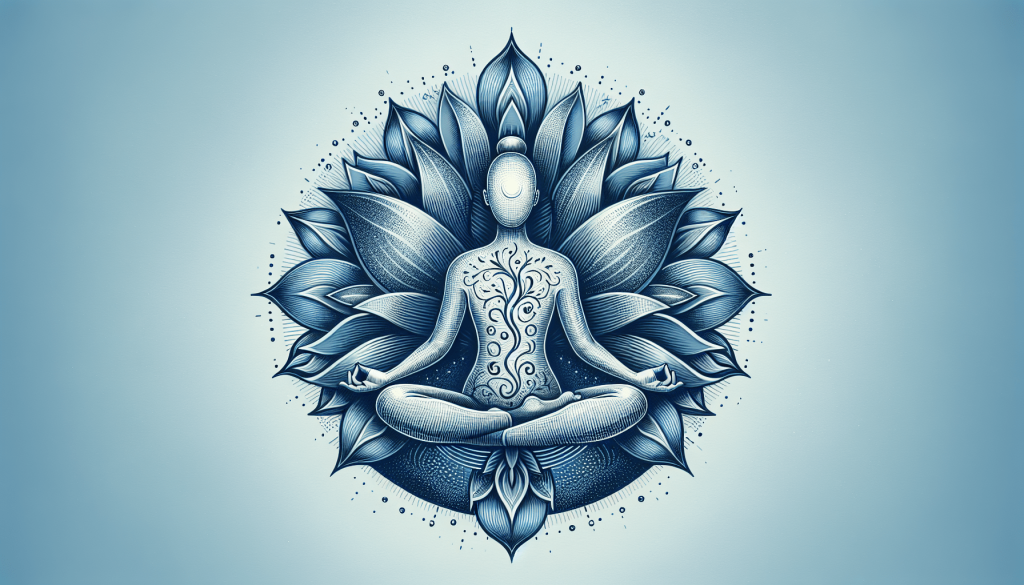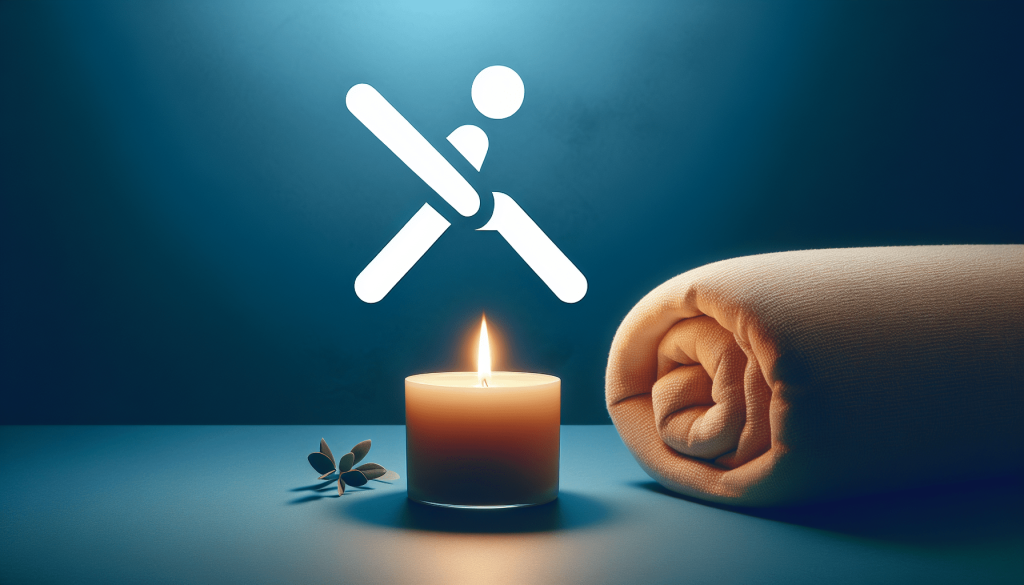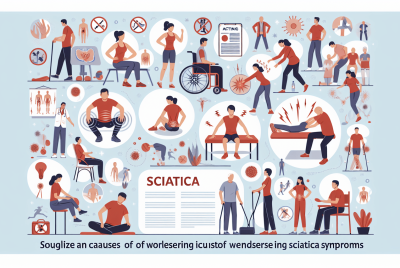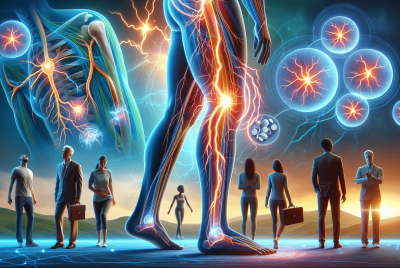What Relaxes The Sciatic Nerve?
What Relaxes The Sciatic Nerve?
Have you ever experienced the excruciating pain caused by the irritation of the sciatic nerve? If so, you know just how debilitating it can be. But fear not, because there are certain methods and techniques that can help alleviate this distress. In this article, we will explore various ways to relax the sciatic nerve, providing you with the relief you desperately seek. So sit back and get ready to discover effective ways to calm that pesky nerve and regain control over your life.

What Relaxes The Sciatic Nerve?
Heat therapy
Heat therapy is an effective way to relax the sciatic nerve and alleviate the pain associated with sciatica. Using hot packs or warm baths can provide much-needed relief and promote relaxation.
Hot packs
Applying hot packs to the affected area can provide immediate relief from sciatic pain. Heat helps to increase blood flow and relax the muscles, reducing tension and inflammation. To use hot packs, simply heat them in the microwave or with hot water and place them directly on the painful area. Leave the hot pack on for 15-20 minutes to allow the heat to penetrate the tissues and provide soothing relief.
Warm baths
Soaking in a warm bath is another effective way to relax the sciatic nerve. The warm water helps to relax the muscles and reduce inflammation, providing relief from sciatic pain. It is important to use water that is comfortably warm, but not too hot. Adding Epsom salt to the bathwater can also enhance the relaxation and provide additional pain relief. Spend at least 20-30 minutes in the warm bath, allowing the heat to work its magic on the sciatic nerve.
Stretching exercises
Stretching exercises can help to relieve sciatic pain by improving muscle flexibility and reducing tension. The following stretching exercises specifically target the sciatic nerve and can bring relief.
Standing hamstring stretch
To perform the standing hamstring stretch, stand upright with one foot slightly in front of the other. Bend forward at the waist, keeping your back straight, and reach your hands towards your toes. Hold this position for 30 seconds, feeling the stretch in the back of your leg. Repeat on the other side, doing a few repetitions on each side.
Piriformis stretch
The piriformis muscle can often be a source of sciatic pain. To stretch the piriformis muscle, lie on your back with both knees bent. Cross one ankle over the opposite knee, and gently pull the bottom leg towards your chest. You should feel a stretch in your buttocks and the outer part of your hips. Hold the stretch for 30 seconds, and then switch sides. Repeat several times on each side.
Yoga and Pilates
Yoga and Pilates offer gentle yet effective movements that can relax the sciatic nerve and strengthen the supporting muscles.
Child’s pose
Child’s pose is a common yoga pose that gently stretches the lower back and buttocks, providing relief to the sciatic nerve. To perform child’s pose, start by sitting on your knees. Slowly lower your upper body forward, reaching your arms out in front of you. Rest your forehead on the ground and focus on relaxing your lower back and hips. Hold this pose for 1-2 minutes, taking deep breaths to enhance the relaxation.
Pigeon pose
Pigeon pose is another yoga pose that targets the piriformis muscle, providing relief to the sciatic nerve. Start in a high plank position and bring your right knee forward, placing it behind your right wrist. Extend your left leg straight back, keeping your hips squared and level. Lower your upper body down, resting your forearms on the ground. You should feel a deep stretch in your right hip. Hold for 1-2 minutes, and then switch sides.
Massage therapy
Massage therapy can be incredibly relaxing and beneficial for individuals with sciatic pain. Different types of massages can help to alleviate muscle tension and reduce pain.
Deep tissue massage
Deep tissue massage involves applying firm pressure to targeted areas of the body to release tension and relax the muscles. This type of massage can be particularly helpful for relieving sciatic pain caused by muscle tightness. The massage therapist will use slow, deep strokes to reach the deeper layers of muscle tissue and break up any knots or adhesions. Deep tissue massage may cause some discomfort during the session, but it can provide long-lasting relief from sciatic pain.
Swedish massage
Swedish massage is a gentler form of massage that focuses on relaxation and improving circulation. This type of massage uses long, flowing strokes and kneading techniques to soothe the muscles, increase blood flow, and promote overall relaxation. While Swedish massage may not specifically target the sciatic nerve, it can help to alleviate the muscle tension and stress that can contribute to sciatic pain.

Acupuncture
Another alternative therapy for relaxing the sciatic nerve is acupuncture. This ancient Chinese practice involves inserting thin needles into specific points on the body to stimulate energy flow and promote healing.
Traditional Chinese acupuncture
Traditional Chinese acupuncture aims to restore the balance of energy, or qi, in the body. By inserting fine needles into specific acupoints along the meridians, the acupuncturist can help to relieve pain and promote overall well-being. For sciatic pain, the acupuncturist may target points along the meridians that correspond to the lower back, hips, and legs.
Electroacupuncture
Electroacupuncture is a modern variation of traditional Chinese acupuncture. It involves attaching small electrodes to the acupuncture needles and delivering a mild electrical current to the points. The electrical stimulation enhances the effects of the acupuncture, providing deeper muscle relaxation and pain relief. Electroacupuncture is often used for chronic pain conditions, including sciatica.
Chiropractic adjustments
Chiropractic adjustments can help to alleviate sciatic pain by realigning the spine and relieving pressure on the nerve roots.
Spinal manipulation
Spinal manipulation, also known as chiropractic adjustments, involves applying controlled force to the spine to correct misalignments and improve joint function. For sciatica, the chiropractor will focus on the lower back and pelvis, where the sciatic nerve is often compressed. By making specific adjustments, the chiropractor can help to alleviate the pressure on the nerve, reducing pain and promoting healing.
Mobilization techniques
In addition to spinal manipulation, chiropractors may use mobilization techniques to relax the sciatic nerve and improve mobility. Mobilization involves gentle movements of the joints and surrounding tissues to increase flexibility and reduce stiffness. The chiropractor may use their hands or specialized tools to perform mobilization techniques, providing relief from sciatic pain.

Medications
Certain medications can be used to relax the sciatic nerve and reduce pain and inflammation.
Nonsteroidal anti-inflammatory drugs (NSAIDs)
Nonsteroidal anti-inflammatory drugs, or NSAIDs, are commonly used to alleviate pain and reduce inflammation. These medications, such as ibuprofen or naproxen sodium, can help to relax the sciatic nerve by reducing inflammation around the nerve roots. It is important to follow the recommended dosage and consult with a healthcare professional before using NSAIDs.
Muscle relaxants
Muscle relaxants may be prescribed to individuals with severe muscle spasms and tension contributing to sciatic pain. These medications work by blocking the nerve impulses in the muscles, resulting in relaxation and reduced pain. Muscle relaxants should be used under the guidance of a healthcare professional, as they can cause drowsiness and other side effects.
Posture correction
Maintaining proper posture is crucial for relieving sciatic pain and preventing future flare-ups. Poor posture can contribute to muscle imbalances and increased pressure on the sciatic nerve.
Ergonomic office setup
If you spend long hours sitting at a desk, it is important to set up your workspace ergonomically. Use a chair with proper lumbar support to maintain a neutral spine position. Adjust the height of your chair and computer monitor so that your feet are flat on the ground and your eyes are level with the screen. Take regular breaks to stretch and move around to avoid prolonged sitting.
Proper lifting techniques
When lifting heavy objects, it is essential to use proper lifting techniques to avoid straining your back and exacerbating sciatic pain. Bend at the knees and hips, keeping your back straight, and lift with your legs rather than your back. Avoid twisting or jerking motions while lifting, as this can put excessive strain on the sciatic nerve. If an object is too heavy to lift safely, ask for assistance or use mechanical aids.

Topical creams and ointments
Topical creams and ointments can provide localized relief and relaxation for the sciatic nerve.
Capsaicin cream
Capsaicin cream, derived from chili peppers, is often used topically to relieve pain and inflammation. When applied to the skin, capsaicin works by desensitizing the nerve receptors, reducing the sensation of pain. It can be applied directly to the painful area, but it is important to follow the instructions and avoid applying it to broken or irritated skin.
Lidocaine patches
Lidocaine patches are another option for relieving sciatic pain. These patches contain a numbing medication that can be applied directly to the skin over the painful area. The lidocaine works by blocking nerve signals, providing temporary pain relief. Follow the instructions for proper application and duration of use, as lidocaine patches should not be used for an extended period of time.
Exercise and physical therapy
Regular exercise and physical therapy can play a crucial role in relaxing the sciatic nerve and promoting overall strength and flexibility.
Core strengthening exercises
Strengthening the core muscles can help to support the spine and reduce strain on the sciatic nerve. Exercises such as planks, bridges, and abdominal crunches can target the core muscles and improve stability. It is important to engage the core muscles correctly and avoid excessive strain or pressure on the lower back.
Low-impact aerobic exercises
Low-impact aerobic exercises, such as walking, swimming, or cycling, can help to increase blood flow and promote overall fitness without putting excessive strain on the spine. These exercises can help to reduce inflammation, improve mobility, and relax the sciatic nerve. Start with gentle exercises and gradually increase the intensity and duration as tolerated.
In conclusion, there are several techniques and therapies that can help relax the sciatic nerve and provide relief from sciatic pain. Heat therapy, stretching exercises, yoga and Pilates, massage therapy, acupuncture, chiropractic adjustments, medications, posture correction, topical creams and ointments, and exercise and physical therapy can all play a role in promoting relaxation and healing. It is important to consult with a healthcare professional to determine the most suitable approach for your individual needs and to ensure proper guidance and supervision throughout the process. With a comprehensive approach and dedication to self-care, you can find relief and relaxation for your sciatic nerve.




